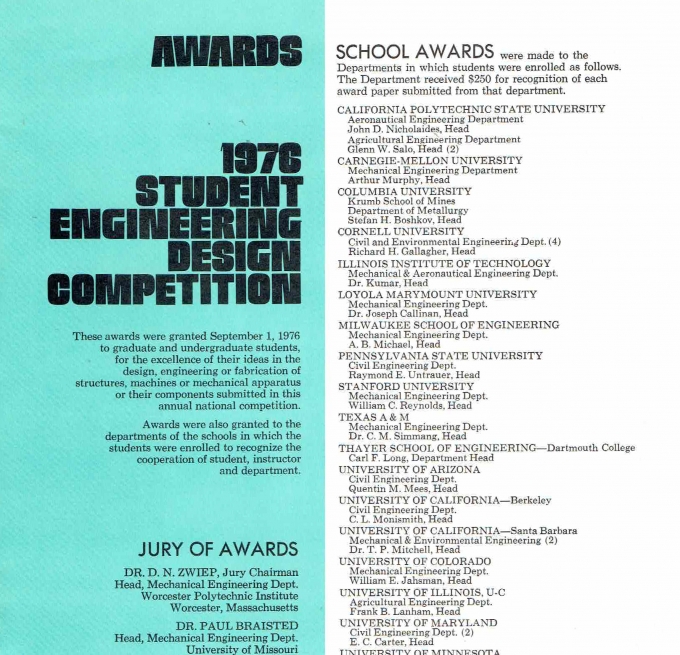Gary Wilson received his BS in electrical engineering with an emphasis in biomedical technology in 1976 and is now in his thirty-seventh year working with companies that serve the medical equipment and device sector. He traces the beginning of his career path to the UCSB College of Engineering and, specifically, to the senior project he completed with classmates Randy Fix and Robert (Bob) Setbacken (both BS mechanical engineering, ‘76) and support from their advisor, Dr. Robert Roemer.
Their project, which involved designing and building a robotic orthotic device to aid the upper-limb movement of a 12-year-old girl who suffered from a severe form of Spinal Muscular Atrophy (SMA) known as Werdnig-Hoffman disease, won the 1976 National Student Engineering Design Competition sponsored by the James F. Lincoln Arc Welding Foundation. Wilson believes it may have been one of the first national engineering awards won by UCSB students.
The various types of SMA are characterized by degeneration of nerve cells within the lowest region of the brain and certain motor neurons in the spinal cord, leading initially to weakness of the truncal and extremity muscles, followed by difficulties chewing, swallowing, and even breathing. Approximately 80 percent of individuals with SMA fall into the severe category, known as Werdnig-Hoffman disease, or SMA1, and have a relatively short lifespan. Bronwyn, the 12-year-old Santa Barbara girl for whom the students designed the orthotic device, was among them.
Randy and Bob designed and built the mechanical structure of the orthotic device that would function as an exoskeleton for Bronwyn’s right arm. The robotic arm was machined from aluminum to minimize weight and included five bi-directional stepper motors that provided a high degree of movement, allowing Bronwyn to accomplish simple daily functions, including feeding herself.
Gary designed the control circuit for the motors, which utilized Bronwyn’s own low-level EMG signals (obtained via surface electrodes) as the input source. The design incorporated both analog amplifiers and digital integrated logic circuits to process the EMG signals and provide multiple outputs to power the five motors. The motors and circuits were powered by a car battery mounted on the rear of Bronwyn’s wheelchair. The overall design of the orthotic arm ensured that Bronwyn could determine each movement she would make.
While Bronwyn participated directly in early-stage development and testing of the orthotic arm and control circuits, the aggressive disease proved too strong, and she succumbed before the project was completed. In honor of Bronwyn, Wilson and his team submitted their senior project to the James F. Lincoln Arc Welding Foundation’s annual student engineering design competition in the summer of 1976 and placed first in the undergraduate-student category.
The UCSB College of Engineering, led then by Dean John Skalnick, received a plaque honoring the achievement, and each students received a cash award and certificate.
“To this day, my time at UCSB, and especially as part of the College of Engineering, has remained an important influence in my life’s work,” said Wilson. “I am truly grateful and appreciative of my experience at UCSB.”

